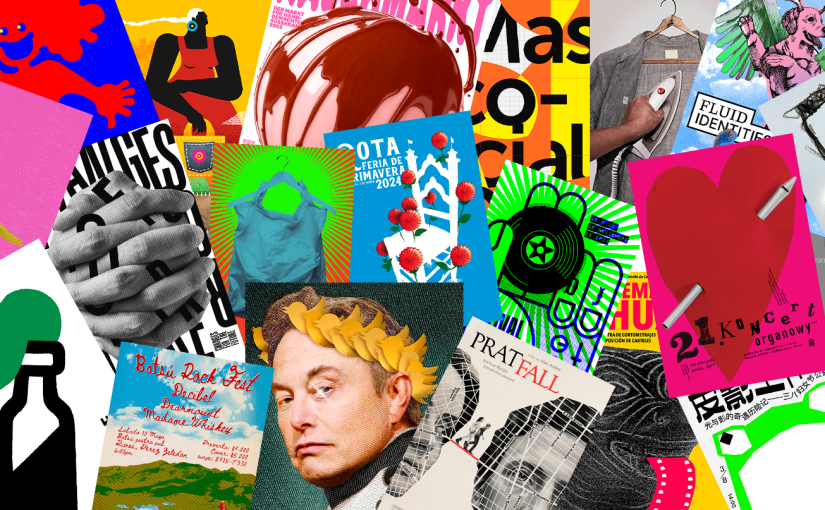El Comité Organizador anunció la selección oficial de la Convocatoria Internacional de Carteles de la Bienal de Diseño y Cartel Bolivia BICeBé 2025
La convocatoria que cerró el pasado 14 de Abril, recibió 12.648 carteles de 91 países del mundo.
Afganistán, Alemania, Arabia Saudita, Argentina, Armenia, Australia, Austria, Azerbaiyán, Bangladesh, Bielorrusia, Bélgica, Bolivia, Bosnia y Herzegovina, Brasil, Bulgaria, Canadá, Cabo Verde, Chile, China, Colombia, Costa Rica, Croacia, Cuba, Chipre, República Checa, Dinamarca, Ecuador, Egipto, El Salvador, Guatemala, Guinea Ecuatorial, Granada, Estonia, Finlandia, Francia, Georgia, Alemania, Haití, Honduras, Hong Kong, Hungría, India, Indonesia, Irán, Irak, Italia, Islandia, Jamaica, Japón, Kirguistán, Letonia, Libia, Macao, Malasia, México, Moldavia, Mongolia, Países Bajos, Nicaragua, Nueva Zelanda, Macedonia, Pakistán, Panamá, Paraguay, Perú, Polonia, Portugal, República Dominicana, Rumania, Rusia, Serbia, Singapur, Eslovaquia, Eslovenia, Sudáfrica, España, Suecia, Suiza, Surinam, Taiwán, Tailandia, Trinidad y Tobago, Las Bahamas, Turquía, Ucrania, Reino Unido, Estados Unidos, Uruguay, Uzbekistán, Venezuela, Vietnam.
Los participantes enviaron sus trabajos en 6 categorías: Categoría A. Cartel Cultural, Categoria B Cartel Social, Categoría C Cartel Publicitario, Categoría D Cartel inédito con la temática «La segunda vida de los objetos», Categoría E Cartel Diseño en Movimiento y la Categoría F Cartel Inédito Estudiantes con la temática «Desacelera para avanzar».
La muestra será inaugurada en La Paz, Museo Nacional de Arte y en Cochabamba en el Palacio Portales este octubre durante las actividades de la BICeBé.
EL CARTEL SOCIAL
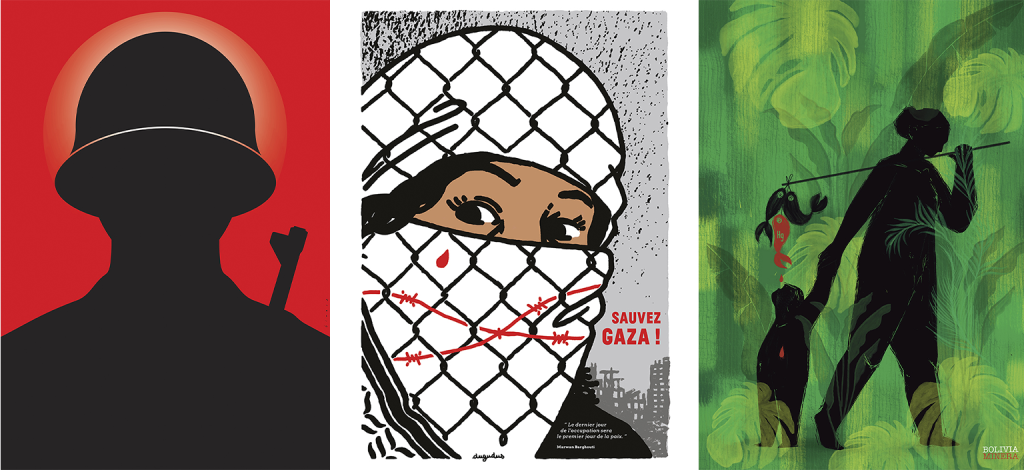
A lo largo de la historia, el cartel social ha sido una herramienta poderosa de comunicación visual que ha reflejado las luchas, aspiraciones y transformaciones de la humanidad. Desde sus orígenes, ha trascendido el papel informativo para convertirse en una voz gráfica que interpela a las masas, despierta conciencias y moviliza emociones. En momentos clave como las revoluciones, las guerras o los movimientos sociales, el cartel ha condensado mensajes urgentes y simbólicos en imágenes directas y memorables, convirtiéndose en una expresión cultural e ideológica de su tiempo.
Durante el siglo XX, el cartel social se consolidó como un vehículo esencial de protesta y resistencia. En contextos de opresión, dictaduras y crisis humanitarias, muchos diseñadores y artistas utilizaron esta forma de expresión para denunciar injusticias y defender derechos fundamentales. Movimientos como el Mayo del 68 en Francia, las luchas por los derechos civiles en Estados Unidos o las campañas contra el apartheid en Sudáfrica encontraron en el cartel un medio de lucha accesible, multiplicable y capaz de transformar el espacio público en un escenario de confrontación visual.
Más allá de lo político, el cartel social ha tenido un papel pedagógico y cultural fundamental. Ha contribuido a la educación pública en temas de salud, medio ambiente, igualdad de género y derechos humanos, entre otros. Su capacidad de síntesis y su lenguaje visual universal lo convierten en un medio eficaz para comunicar mensajes complejos de manera inmediata y emocional. El cartel social no solo informa, sino que también invita a reflexionar, empatizar y actuar.
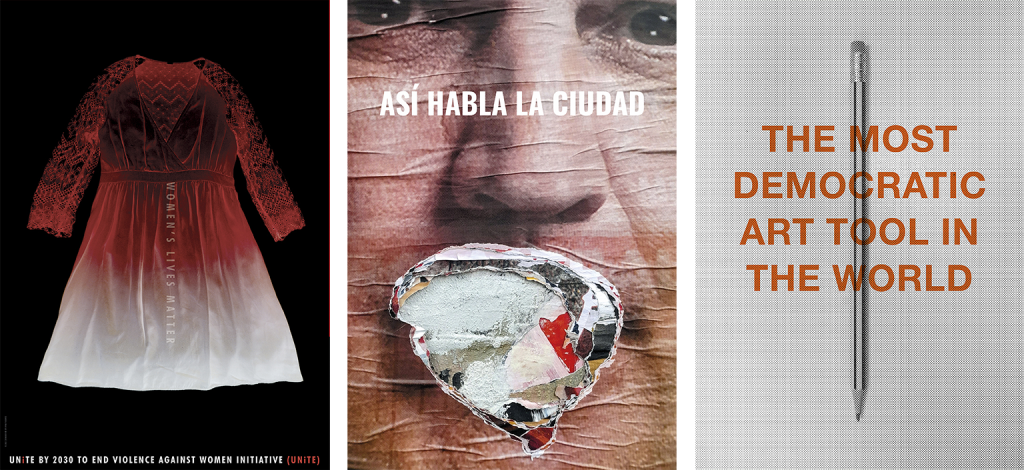
En la actualidad, pese a la irrupción de los medios digitales, el cartel social sigue vigente y se reinventa como una forma híbrida entre lo analógico y lo digital. Continúa siendo un testimonio gráfico del espíritu de cada época y un espejo de los desafíos contemporáneos. Ya sea en una marcha callejera, en una red social o en una galería de arte, el cartel social mantiene su fuerza disruptiva y su capacidad de conmover, recordándonos que el diseño también puede ser una forma de compromiso y transformación social.
————————-
BICeBé presents the selected posters that will be part of the Main Exhibition in October 2025
The Organizing Committee has announced the official selection of the International Poster Call of the Bolivia Design and Poster Biennial BICeBé 2025.
The call, which closed on April 14, received 12,648 posters from 91 countries around the world.
Afghanistan, Germany, Saudi Arabia, Argentina, Armenia, Australia, Austria, Azerbaijan, Bangladesh, Belarus, Belgium, Bolivia, Bosnia and Herzegovina, Brazil, Bulgaria, Canada, Cape Verde, Chile, China, Colombia, Costa Rica, Croatia, Cuba, Cyprus, Czech Republic, Denmark, Ecuador, Egypt, El Salvador, Guatemala, Equatorial Guinea, Grenada, Estonia, Finland, France, Georgia, Germany, Haiti, Honduras, Hong Kong, Hungary, India, Indonesia, Iran, Iraq, Italy, Iceland, Jamaica, Japan, Kyrgyzstan, Latvia, Libya, Macao, Malaysia, Mexico, Moldova, Mongolia, Netherlands, Nicaragua, New Zealand, North Macedonia, Pakistan, Panama, Paraguay, Peru, Poland, Portugal, Dominican Republic, Romania, Russia, Serbia, Singapore, Slovakia, Slovenia, South Africa, Spain, Sweden, Switzerland, Suriname, Taiwan, Thailand, Trinidad and Tobago, The Bahamas, Turkey, Ukraine, United Kingdom, United States, Uruguay, Uzbekistan, Venezuela, Vietnam.
Participants submitted their work in six categories:
Category A: Cultural Poster, Category B: Social Poster, Category C: Advertising Poster, Category D: Unpublished Poster on the theme “The Second Life of Objects,”
Category E: Motion Design Poster, and Category F: Unpublished Student Poster on the theme “Slow Down to Move Forward.”
The exhibition will be inaugurated in La Paz at the National Museum of Art and in Cochabamba at the Palacio Portales this October, as part of the official activities of BICeBé.
SOCIAL POSTER
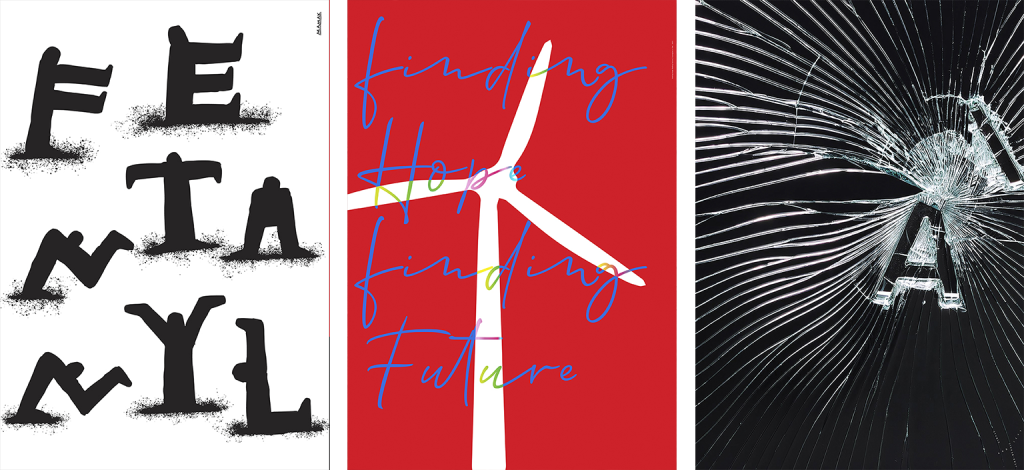
Throughout history, the social poster has been a powerful tool of visual communication, reflecting the struggles, aspirations, and transformations of humanity. From its origins, it has transcended its informative function to become a graphic voice that addresses the masses, awakens consciousness, and stirs emotions. In key moments such as revolutions, wars, or social movements, the poster has condensed urgent and symbolic messages into direct and memorable images, becoming a cultural and ideological expression of its time.
During the 20th century, the social poster established itself as an essential vehicle of protest and resistance. In contexts of oppression, dictatorships, and humanitarian crises, many designers and artists used this form of expression to denounce injustices and defend fundamental rights. Movements such as May ’68 in France, the civil rights struggles in the United States, or the anti-apartheid campaigns in South Africa found in the poster an accessible, reproducible medium capable of transforming public space into a stage for visual confrontation.
Beyond the political realm, the social poster has played a fundamental educational and cultural role. It has contributed to public education on issues such as health, the environment, gender equality, and human rights. Its capacity for synthesis and its universal visual language make it an effective medium for communicating complex messages in an immediate and emotional way. The social poster not only informs but also invites reflection, empathy, and action.
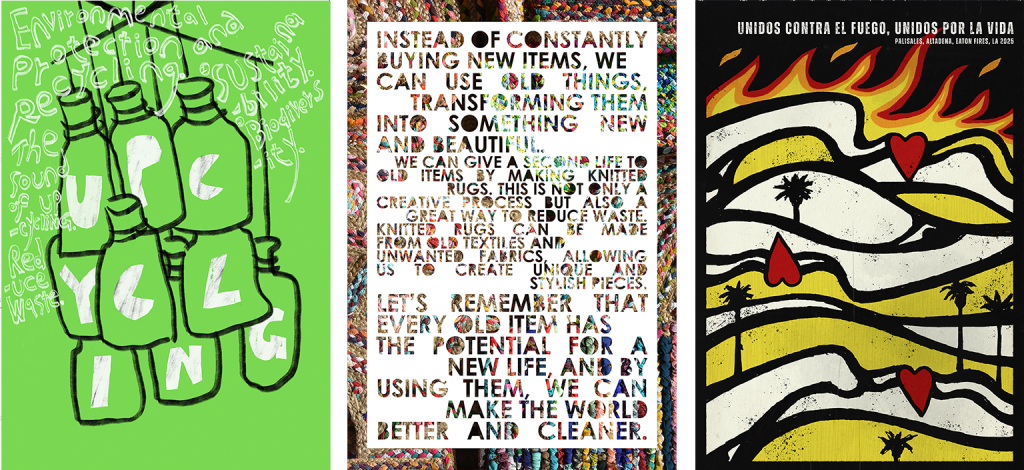
Today, despite the rise of digital media, the social poster remains relevant and reinvents itself as a hybrid form between analog and digital. It continues to serve as a graphic testimony of the spirit of each era and a mirror of contemporary challenges. Whether at a street protest, on social media, or in an art gallery, the social poster retains its disruptive power and its ability to move us, reminding us that design can also be a form of commitment and social transformation.
CONOCE A LOS SELECCIONADOS | MEET THE SHORLISTED aquí | here
#bicebe2025 #bicebeepicentrocreativo #vivalabicebe
